The diverse yoga world offers practitioners various pathways, such as Bikram, Iyengar, Hatha, Ashtanga, etc. Each branch has its own science-backed methods and benefits.
You may often hear people talking about the term, but what is Vinyasa yoga? It’s a special form of this practice that not many newbies know about.
Thinking about yoga classes, a group of people doing different poses, one at a time, might spring up in your mind. But in Vinyasa flow yoga, those moves are trapped inside a sequence, with transitions in-between. This dynamic practice proves to be more playful and enjoyable than other kinds. Let’s dive deeper into it!
What Is Vinyasa Yoga?
What is Vinyasa flow? This exercise’s name, “flow,” comes from the seamless and continuous flow it brings about in practice. It evolves mostly around “connection” and “flow.”
Unlike in the Hatha style, where every posture is separated from the other with intervals, this one links many postures together by the breath. People often mistake it for the more physical and athletic variant, the power style.
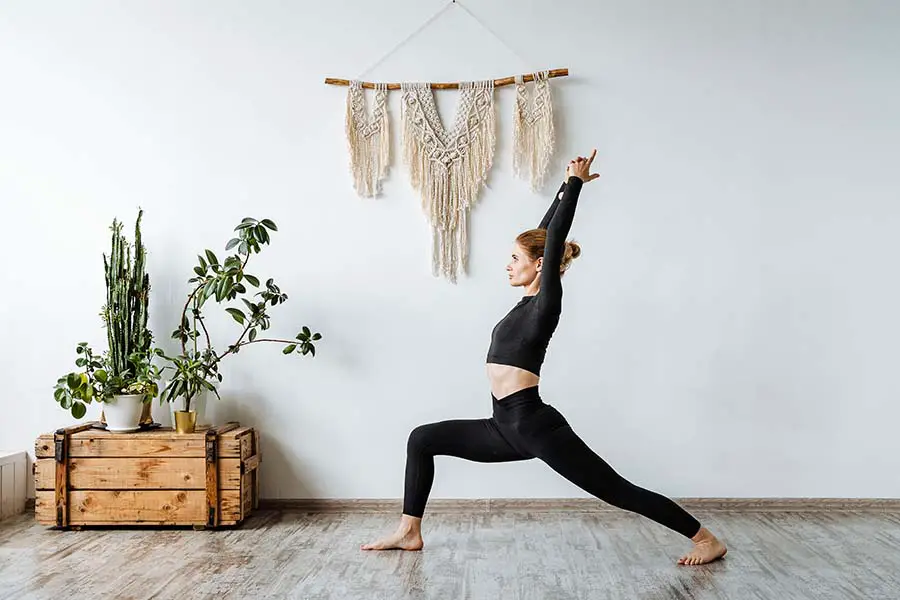
Somehow, you might think it is similar to Ashtanga, but it’s not. Though they are all carried out in a string of moves, the coach decides the sequence’s orders in Vinyasa. It will be mostly based on the coach’s experience and preferences rather than a set sequence in Ashtanga. This feature makes every Vinyasa class seem distinctive, and there is no repeated chain of poses.
This variable nature helps balance our body and keeps us from injuries caused by repetitive motion. These injuries will happen if a person practices the same exercise every day.
The fact that we only enter a posture for a while then leave shows us the philosophy of the flow style that things are born in a temporary nature. The continuous steps in this style can be described as us trying to connect our action, aiming to move towards the important things to us, which are truly sacred.
Reading on below, you will see that many of the flow style’s meaning and features are deeply affected by T Krishnamacharya. In the following sections, we will discuss it further and in detail.
Vinyasa Yoga Definition
There are various versions when it comes to the definition of this name. Let’s start with the most basic ones, which will break the word into two main components.
One of the most credible sources, who is also Krishnamacharya’s student, is named Srivatsa Ramaswami. According to him, the prefix “vi” stands for variation, while the suffix “nyasa” indicates “within prescribed parameters.” These parameters, in particular, are Long and Smooth Breathing (Prayatna Sithila), Steadiness (Sthira), and Comfort (Sukha) in Patanjali’s Yoga Sutras.
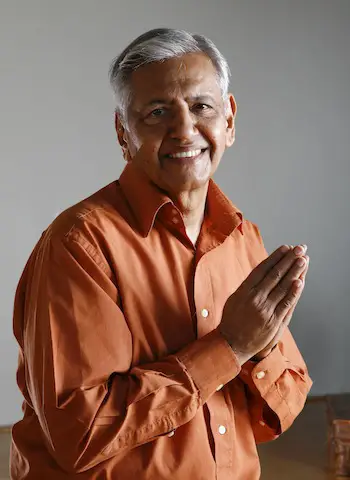
Alongside that explanation, people also define the term as a distinctive practice, with “nyasa” meaning “to place” and “vi” equaling “in a special manner”. This means all of our movements and poses while exercising are intentional results of our consciousness. And it’s clearly not us swinging our hands and legs around without purpose.
Those external movements, actually, are exposing our internal thoughts and feelings.
To support the theory, Shiva Rea, the best coach in America and the founder of Prana Vinyasa Yoga, also says that the early Tantras refer to this style as the consciousness’s sequence. It states that this style shows us how our life blossoms when Vinyasa taps into our creative genius.
The final definition we will introduce today is a literal translation from Ellen Stansell. When translating the term from Sanskrit, we get “connection”. Indeed, the practice is literally a connection of breath and movement in every sequence!
Origins
If you want to learn about the style’s origins, take a trip back to the Vedic Age, where people defined Vinyasa as a process with detailed steps to create the sacred sense.
Edwin Bryant also cites that multiple moments together form a series, and that series reflect any object’s progression through time. Those moments are not static. They are put together to prove the changes in things.
Through time, many yogins contribute to the development of the flow style. Krishnamacharya, the man that people consider as the modern yoga’s father, is the Vinyasa’s architect. His “Yoga Makaranda – The Nectar of Yoga” book discusses the style’s importance.
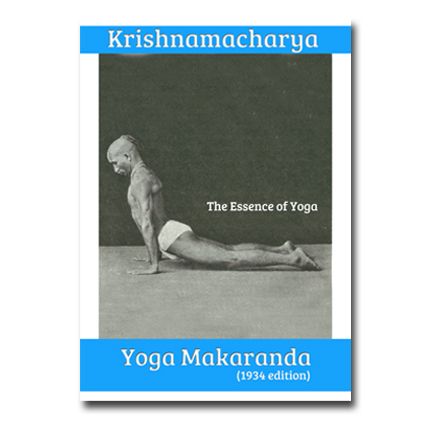
He used the art of the flow style to calm the active teenagers down. The many movements of the style can surely satisfy their full-of-beans spirit. Not only for those adolescents back then but for those living in the fast-moving world nowadays, Vinyasa still does a good job caressing our inner self.
Vamana Rishi, the author of the famous ancient yogic document “Yoga Korunta”, is also a benefactor if you talk about the people who develop the style. His ideas were to use the flow style to embody many of yoga’s facets simultaneously, including japa, asana, meditation, pranayama, and mudra.
Characteristics
As we are talking about a style of this sport, there must be multiple characteristics to state:
- It uses the breath to connect many postures together. Doing it, you might feel like you’re flowing through the moves throughout the session, hence the “flow” name.
If you find it hard to imagine, just think it’s the opposite of a class based on alignment. That class would require students to enter, explore, then come out of a pose before coming to another.

- The link between postures in this style is “transition”. It’s the part between many poses in a Vinyasa’s sequence. Just think this transition is a pose itself and try to master it just like how you try to master an asana.
- Though each coach will introduce a new sequence each time, they all will consist of sun salutations. And you should expect to find yourself doing the Modo, Baptiste Power, CorePower, or Jivamukti if joining a Vinyasa class.
- The style is all about movements and breath. It’s the way you’re moving in and then out of many postures while inhaling and exhaling.
- The technique of breathing we use in this one is Ujjayi. It’s how you inhale and exhale rhythmically in a relaxing manner.
- Unlike other practices, the Vinyasa practice owns the cardiovascular component and can help us generate heat while doing it. It’s all thanks to the many movements and transitions it brings.
- Though we might often see flow yoga as high-energy, there are still rapid or even slow approaches. Exploring the slower paths can help individuals build strength and flexibility.
- One single session of Vinyasa can recall all members of the asana families, resulting in a complete session.
- The fixed form systems of Ashtanga or Bikram often try to reveal changes from us after a period using a fixed sequence. Those changes can be how we’ve progressed and understand the poses better.
On the other side of the table, Vinyasa tries to show us the permanent and changeless aspects of us through the changes of the sequence each day. It can be our connection to anything, our ways of thinking, purposes, or intentions.
The benefit of the changing sequence is we get to understand those postures in-depth. Why? Because in order to exercise the transitions smoothly, we have to understand each posture to know how we will move into that posture.
- It is more interesting than other kinds. Many practitioners start taking Vinyasa Flow since they’re bored of the hard-and-fast forms.
- The style coincides with today’s world – a high-energy and continuously changing world with millions of directions. Chaotic as it is, this practice can bring you from that world to your inner peace through breathing and calm you down.
- Practicing this style, you will experience your flow state when you’re highly focused and fully absorbed in what you’re doing. This consciousness type generates the “effortless effort” that helps you easily carry out poses.
When you’ve reached the infinity within you, you can perform the art effortlessly. Then, you’ve achieved the state of concentration where you forget yourself by letting your body follow a disciplined practice.
- You start the session with a posture and finally will come back to it to end your session.
- It is all about fluidity and grace, balance and harmony. Many people consider it “moving meditation”. While moving through the session, we notice the way we move and why we are moving.
- The way yogis move together and support each other during a session reminds them that they are all living this life together and how bigger the practice, or life, is than themselves.
The Bigger Story About Vinyasa
We start our session with the child’s pose and then end it with the death pose. By the term’s meaning, it’s like we’re going through our entire lifetime, from birth to death. The many positions in Vinyasa flow yoga manifest many pages of life that we move from one to another.
How we start the position, how we stay and leave reflects the same in our daily lives everywhere. That’s why it is so sacred.
The way you navigate through these places can affect you a lot since the transitions or the in-between parts can be translated to the unknown and ambiguous parts of life. Better befriending them will benefit you in your life.
Those in-between parts let us learn “how” to move through different poses and the importance of the way we move. Hence, we’ll recognize it’s the process that matters. It’s how we appreciate what we have in life that matters most, not what we can’t get.
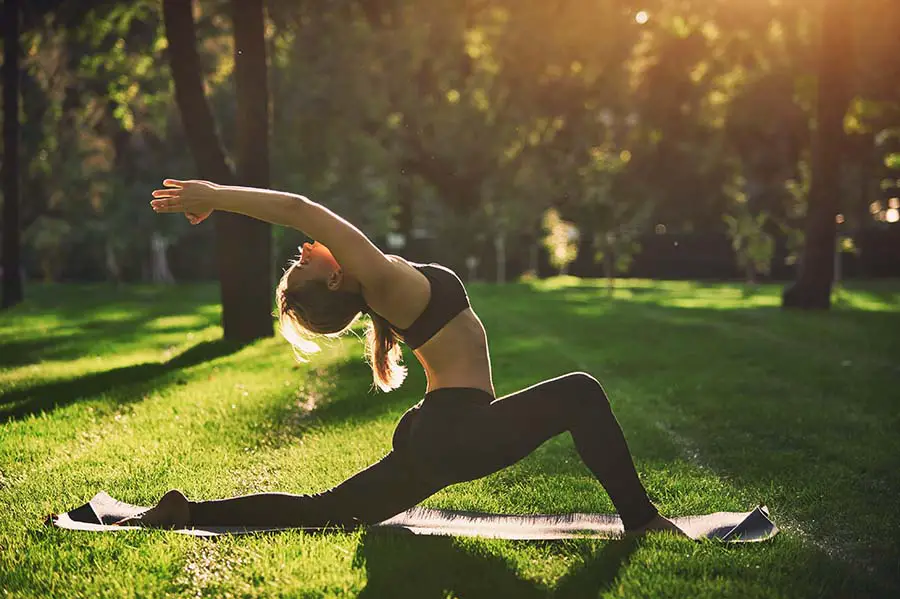
If you practice the sequences without paying close attention to those parts, you will fall into a state where you’re unconscious and unaware of them. You will be stuck in that vicious cycle and won’t learn anything from it.
While moving through the flow, we’re moving our energy, life force, or prana. The moving process lets us feel alive and enjoy our journeys through the sessions.
You will certainly realize everything’s temporary nature. This moment will be its exclusive version, and you will only get to experience it for one time. No one ever steps in the river twice. Enjoy your life as it goes since you won’t be able to turn back time.
Based on the only permanent metaphor during the sequence, your breath, it shows us the ever-changing nature of life. Through all the above meanings, it tries to teach us how to enjoy our life to the fullest. It’s short. You should only focus on the important things.
Why Is Vinyasa Yoga So Popular?
Have you ever wondered why this style is so popular everywhere? Normally, you can only catch sight of 12 students in an Iyengar class, but you will be joining 15 to 50 other students if you’re signing up for a Vinyasa session. Here are some of the key reasons!
1/ It won’t take you long to learn Vinyasa at first, but it takes a great while and effort if you want to learn how to teach it well.
Let’s start by looking at what it takes to become an Iyengar coach. You will need at least four years of studying continuously with a certified teacher in Iyengar Yoga to teach this form.
Not only that, but you will also need mentorship. If not, they will have to graduate from a list of teaching programs, be recommended by their mentors, and pass their rigorous assessments.
The Vinyasa coach must have been out there teaching for at least two years and must have finished their 200-hour training program on teaching. Mentorship is not required since they’re rare.
Those training programs often include a script, which is a specific sequence. This script comes with some benefits. It ensures the consistency of every class to make students feel reassured. Also, it makes learning to teach Vinyasa easier, thereby making the form more popular.
However, it can be the knot tying the teacher (who is also a student while learning how to teach) behind. If they rely on the script too much, they won’t be able to create their own sequences.
Just imagine building a sequence is like writing a song. Those poses are similar to the musical notes found on your music sheet. If you don’t understand the notes, which are the poses, well enough, you won’t be able to write a whole sheet filled with multiple notes. Then, you can only stick to the given sheet, which is the script.
Remember, even the best yogins have spent years trying their best to practice and work through different sequences and poses. Everything takes time and effort. There’s no shortcut to success.
The choices of postures that make up sequences are important. You can’t just put them together and hope they will work out somehow!
2/ The style is aerobic and athletic. It allows practitioners to sweat with movements.
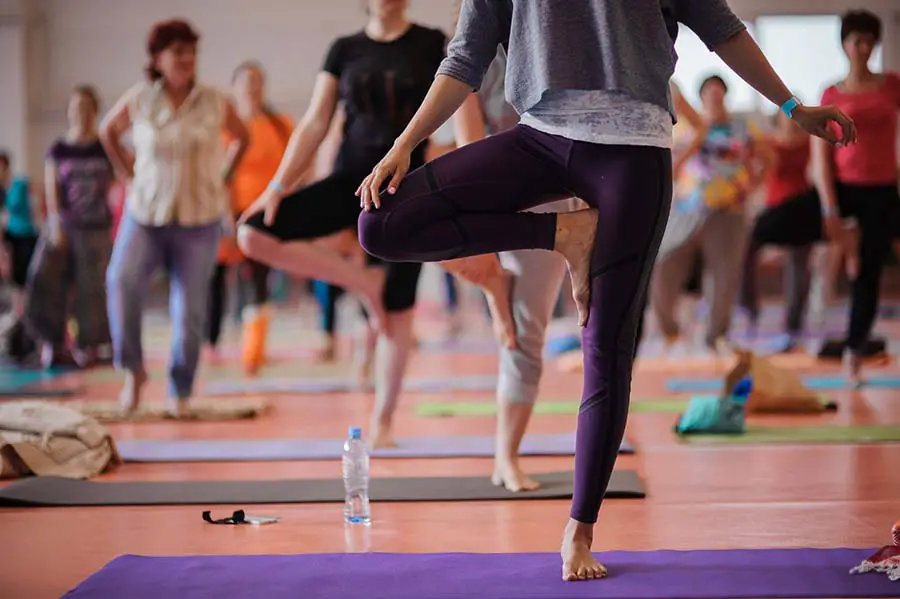
The Vinyasa’s foundational sequences, including the Sun Salutations and Surya Namaskaras, if done repetitively, will stimulate the pumping of your blood. They will get your sweat out after three rounds of each of them.
Once you’ve done all that and break a sweat, you’re likely ready to move to other postures. They are the most popular ways to warm yourself up during each class.
3/ It is fun.
We’re all seeking joy in life. Still, having fun with yourself on the street is not a good idea. A flow yoga class allows you to find your joy without anyone judging you all along. That joy is to feel good moving around in an open mind.
Then why must it be the flow style? Can it be another one? You will stop doing something if you find no interest in doing it a couple of times. And flow yoga can provide you with something new and interesting each time since no two classes are the same. The feeling of constantly moving is already a fun thing.
That’s also the secret to both life and Vinyasa – we engage in them because of the joy they bring.
Can Doing Vinyasa Yoga Cause You Injuries?
It’s obvious how many benefits Yoga can offer us. But alongside benefits come threats. Doing it in the wrong ways can result in many types of injuries. The best way to avoid those risks is to learn how to do it correctly.
The key focus point you should keep in mind is “stabilization”.
The stabilization of you when keeping yourself in a position for several moments is not the main idea here. It’s the way you change into the next pose that matters most.
To do so, you have to change the burden and the focus point to another muscular action seamlessly while facing great challenges from many forces such as load, gravity, etc.
During this phase, you might lose your patience and get injured flinging around by losing control of your momentum. What we recommend here is you consider the transition a rhythmically dance.
Moreover, the repetition of poses can also cause you injuries. Nevertheless, unlike in Ashtanga, where there are multiple chaturangas, a Vinyasa class has less, if not none. That alone decreases the risks.
If you have the ability, try modifying the sequences, so there’s no repetition! Then, keep yourself relaxed and stable while approaching it.
David Keil, a noted individual that takes his great interest in Ashtanga, states that the start or the end of repetition may strain your shoulder girdle if done wrongly.
According to his surveys, here are the three most common reasons that lead to shoulder injuries while practicing:
- Excessive unintentional repetition
- Unstable shoulders, mostly because they don’t have enough strength to stabilize them.
- Misunderstand chaturanga’s technique
To avoid these, David also offers three recommendations:
- Good technique
- Patience
- Provide stabilization by properly distributing strength
Ashtanga Vs. Vinyasa
While researching flow yoga online, you might come across “Ashtanga Vinyasa” several times. We know it isn’t very clear seeing how they sit together like that. It might also lead us to think that they are just the same.
As explained above, they couldn’t be more different.
To talk about their origins, recall above that we have mentioned T. Krishnamacharya being the architect of Vinyasa. He has contributed mostly to how the style developed. Then, he went on and taught this style to K. Pattaboi Jois. That man, after learning from Krishnamacharya, became the founder of Ashtanga.
You can see from this explanation that they have the same origin, but clearly, the flow yoga predates the other form.
They are two independent forms, first coupled and then separated to their own paths. If you see someone calling themselves the Ashtanga Vinyasa practitioners, they indeed learn Ashtanga yoga. On the other hand, a Vinyasa practitioner learns to connect their breath and movements within many sequences.
One more difference between them is that Ashtanga uses salutations as a warm-up exercise, while the other can choose not to involve them.
Why Should You Choose Vinyasa?
You will rarely catch other forms of exercise that connect your movement and breath or let you feel the flow of all things. While doing the sequences, you will feel alive exhaling and inhaling, watching the changing nature of things, and seeing how yourself is connected to others.
The style itself unveils the interdependence of life. It teaches us to be conscious of each breath and movement, the same as how you’re aware of your thoughts and feelings in life.
Also, the variety of sequences will free you from the boredom of doing the same thing every time you practice. The dance-like sensation of each class allows you to freshen your body and leave the class with your body full of energy.
Doing it frequently can lengthen and strengthen your muscles, enhancing your stability through time.
Conclusion
There are many more to tell about “what is Vinyasa yoga”. Yet, the above information should be sufficient for any newbie wanting to join the form but confused by the conflicting information online.
Sign up for this flow style and get your body working towards a better “you”!


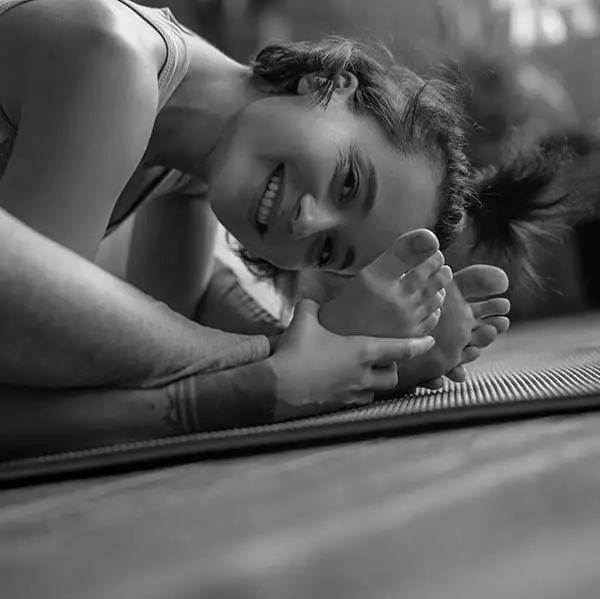
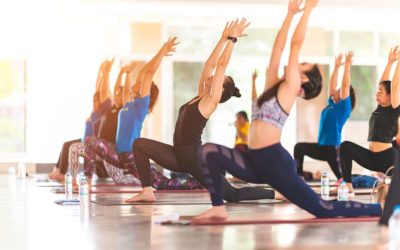
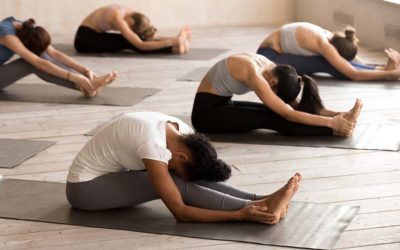
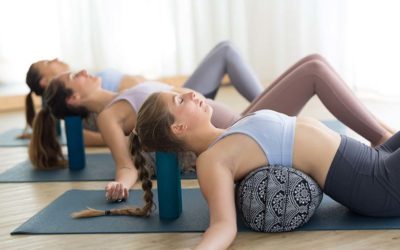
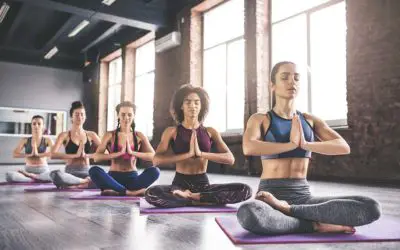

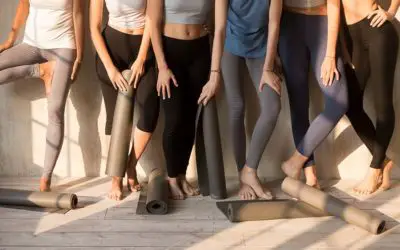
0 Comments